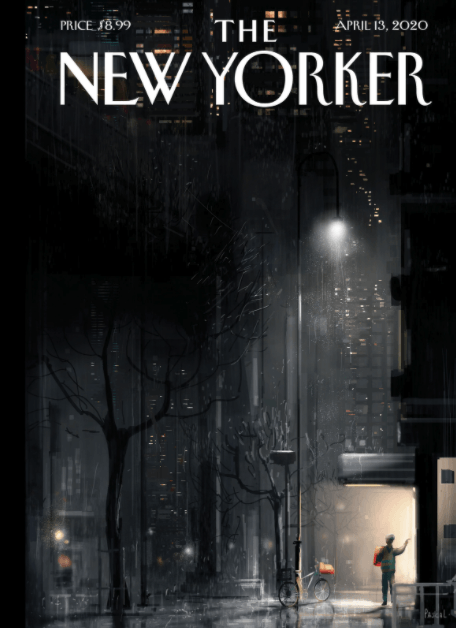I never thought I'd live to see a dystopian future.
Writers more gifted than myself (not to mention innumerable artists and some of the most accomplished directors in the history of film) have conjured their own distinct versions of how such a future state might look - and what it would entail for the people living in it.
I) 'Lifeline'
On a blinding Saturday morning, while squinting unhappily at a too-big pile of mail through a pair of Helmut Lang aviators on the back deck, the cover of the April 13 edition of The New Yorker stuck out.
It's a piece by Pascal Campion called "Lifeline." In it, a worker delivering something essential (food, probably) stands under a lighted awning amid towering high-rises and rings the buzzer. Just a few feet away, his bicycle rests precariously against a light pole. It's raining. It's dark. The streets are deserted.
The visual is, to quote Françoise Mouly, who interviewed Campion, "a nod" to the essential worker "and to his place in a silenced metropolis."
Describing the cover, Campion told Mouly the following:
I started not with the feel of the city but with my own emotions. I felt dark, lonely, a little scared, and I built a city—based on New York—out of that feeling. Instead of choosing shapes, I chose lights and shadows. I worked on textures first and added details later. Eventually, I got to a point where all I needed was a small visual anchor to make the image representative rather than abstract. In this case, the delivery man became the recipient (and embodiment) of my emotions.
Staring at the cover I felt suddenly out of place in the world - even more detached from the rest of humanity than usual. My reality is the opposite of Campion's "Lifeline," and thereby the opposite of
